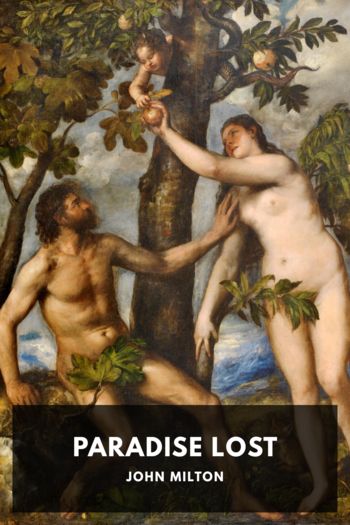Table-Talk by William Hazlitt (best pdf reader for ebooks txt) 📕

- Author: William Hazlitt
Book online «Table-Talk by William Hazlitt (best pdf reader for ebooks txt) 📕». Author William Hazlitt
“In regard to the last objection (viz. that the lower half of the figure is longer than just proportion allows) it must be remembered that Apollo is here in the exertion of one of his peculiar powers, which is swiftness; he has therefore that proportion which is best adapted to that character. This is no more incorrectness than when there is given to a Hercules an extraordinary swelling and strength of muscles.”
Strength and activity then do not depend on the middle form; and the middle form is to be sacrificed to the representation of these positive qualities. Character is thus allowed not only to be an integrant part of the antique and classical style of art, but even to take precedence of and set aside the abstract idea of beauty. Little more would be required to justify Hogarth in his Gothic resolution, that if he were to make a figure of Charon, he would give him bandy legs, because watermen are generally bandy-legged. It is very well to talk of the abstract idea of a man or of a God, but if you come to anything like an intelligible proposition, you must either individualise and define, or destroy the very idea you contemplate. Sir Joshua goes into this question at considerable length in the Third Discourse:
“To the principle I have laid down, that the idea of beauty in each species of beings is an invariable one, it may be objected,” he says, “that in every particular species there are various central forms, which are separate and distinct from each other, and yet are undeniably beautiful; that in the human figure, for instance the beauty of Hercules is one, of the Gladiator another, of the Apollo another, which makes so many different ideas of beauty. It is true, indeed, that these figures are each perfect in their kind, though of different characters and proportions; but still none of them is the representation of an individual, but of a class. And as there is one general form, which, as I have said, belongs to the human kind at large, so in each of these classes there is one common idea which is the abstract of the various individual forms belonging to that class. Thus, though the forms of childhood and age differ exceedingly, there is a common form in childhood, and a common form in age, which is the more perfect as it is remote from all peculiarities. But I must add further, that though the most perfect forms of each of the general divisions of the human figure are ideal, and superior to any individual form of that class, yet the highest perfection of the human figure is not to be found in any of them. It is not in the Hercules, nor in the Gladiator, nor in the Apollo; but in that form which is taken from all, and which partakes equally of the activity of the Gladiator, of the delicacy of the Apollo, and of the muscular strength of the Hercules. For perfect beauty in any species must combine all the characters which are beautiful in that species. It cannot consist in anyone to the exclusion of the rest: no one, therefore, must be predominant, that no one may be deficient.”
Sir Joshua here supposes the distinctions of classes and character to be necessarily combined with the general leading idea of a middle form. This middle form is not to confound age, sex, circumstance, under one sweeping abstraction; but we must limit the general ideas by certain specific differences and characteristic marks, belonging to the several subordinate divisions and ramifications of each class. This is enough to show that there is a principle of individuality as well as of abstraction inseparable from works of art as well as nature. We are to keep the human form distinct from that of other living beings, that of men from that of women; we are to distinguish between





Comments (0)